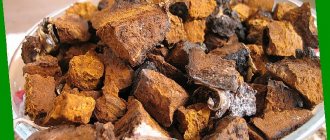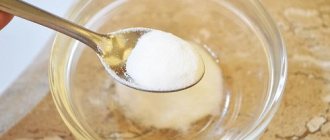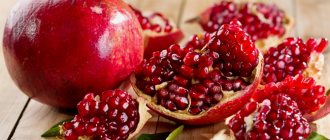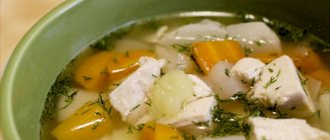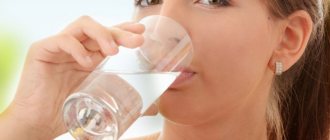Pancreatitis, or inflammation of the pancreas, is very difficult to treat. A strict diet and medication often only relieve acute symptoms of the disease. Therefore, many turn to folk remedies - herbal infusions and similar medicines. Not long ago, information appeared that ordinary baking soda actively contributes to the treatment of pancreatitis. However, there are no official comments from doctors on this matter yet, but there is a positive experience of its use, which patients actively share with each other.
Useful properties of soda
Baking soda or sodium bicarbonate has many beneficial properties. Studies of the consequences of chemical processes that can occur when soda interacts with various tissues of the human body have revealed the following positive effects from ingesting soda:
- Improving the supply of oxygen to the body's cells, which increases the efficiency of their activity, prevents cancer and other negative consequences from a lack of oxygen in the body. For pancreatitis, soda, by increasing the oxygen supply to the pancreas, accelerates the process of its recovery.
- Being inherently alkaline, baking soda reduces acidity in the gastrointestinal tract, stabilizing digestion and preventing the development of ulcers. Also, due to this chemical property, soda increases alkali reserves in the body.
- The effect of soda is also expressed in normalizing the acid-base balance, reducing the level of hydrochloric acid in the stomach, which relieves the pancreas and contributes to a faster recovery of the patient.
- Sodium bicarbonate helps improve the absorption of B vitamins, which are necessary for the functioning of the pancreas.
- Excess soda generated during treatment is easily eliminated from the body by the kidneys.
How does baking soda affect the body?
Information about the therapeutic effect of soda in chronic pancreatitis has appeared recently. According to some sources, soda exhibits the following actions:
- Improves oxygen saturation of tissues.
- Neutralizes acidic compounds formed as a result of metabolic processes.
- Improves the absorption of B vitamins.
The information is considered experimental and has not been fully confirmed.
To use baking soda as a remedy, the chemical must be stored correctly. It is better to pour the powder into a tightly sealed container. The product can be stored for 6 months from the moment the package is opened.
Therapeutic effect
Many scientists have studied ways to treat various diseases with soda. Neumyvakin I.P. achieved the greatest success in this matter. In his works, he substantiated the therapeutic effects of soda on many internal human organs, including the pancreas.
Thus, during its functioning, this gland secretes special pancreatic or pancreatic juice, which enters the duodenum. Further, after food from the stomach enters this intestine, the digestion process begins there, expressed in the breakdown of fats, proteins and carbohydrates with the help of alkaline enzymes contained in pancreatic juice.
When the pancreas becomes inflamed, it stops supplying the duodenum with the necessary enzymes. Then the body, in order to digest food, begins to send hydrochloric acid from the stomach into the duodenum. As a result, the acid-base balance in the body is disrupted.
Treatment with soda in this case occurs due to the fact that it performs some of the functions of the pancreas, restoring the balance of acid and alkali in the gastrointestinal tract, reducing excessive levels of hydrochloric acid and promoting normal digestion of food. As a result, the load on the diseased organ is reduced, and it recovers much faster.
The role of soda in therapy
However, it is absolutely impossible to assume that drinking soda can completely replace complex treatment of pancreatitis. Sodium bicarbonate is just an auxiliary agent that helps accelerate the process of restoring normal functioning of the pancreas.
In addition, it is necessary to follow a strict diet; in the first few days of an attack of acute pain, it is possible to completely eliminate food intake. Then it is gradually recommended to eat only porridge, and only after a week you can add certain fruits to your food. For a long time, you will have to exclude from your diet everything fried, spicy and fatty, as well as any alcohol.
The diet, like all complex treatment, should be prescribed only by a doctor. This will allow you to speed up the healing process and choose the optimal treatment method, including the selection of medications.
How to treat chronic pancreatitis
, Elabuga
October 18, 2021
Hello our dear doctors!
I am 36 years old. I don't drink, I don't smoke. Previously, I could drink a little wine about 5 times a year during the holidays. Chronic cholecystitis, gastritis since the age of 16, later they began to diagnose gamtroduodenitis. Pancreatitis was diagnosed in 2011, enzyme deficiency. But I was treated and everything was restored. In 2022, I ended up in the surgical department with the island. With pancreatitis, amylase was increased, the pain was terrible. Since then, gastritis and pancreatitis have periodically worsened. In July 2022, I was diagnosed with erosion in the stomach for the first time, there was severe pain, I took amoxicillin + clarthromycin according to the regimen, omeprazole no longer helped me, they prescribed rabeprozole. I was cured and ate everything again, excluding fast food and soda. Everything was fine. In November 2022, there was severe stress and after eating cake on an empty stomach, (+ on this day I had hirudotherapy for the 3rd time and I lost a lot of blood) after 6 hours, indomitable vomiting, bringing no relief, terrible nausea, I felt bad, I couldn’t sleep terribly I felt sick, after 2 days the temperature rose to 38 and this had never happened in my life - I was shaking, dizzy, and felt terribly bad. I couldn’t eat for a long time; I had an aversion to food and the smell of food. I was treated for a long time, it became a little better, there was stress again, the emotions worsened again. I was on oatmeal jelly, following a strict diet in February, I decided to eat a baked pie with egg and onions, and again at night I had an attack. We examined several times FGDS - severe inflammation in the stomach, numerous erosions, reflux esophagitis, cardia insufficiency, was treated for a long time with either rabeprozole, then esomeprazole, then omeprazole + mezim (Creon), no-spa, mebeverine, eglonil, cerucal, de-nol, almagel when there was heartburn. We tried Vinilin again, pancreatitis worsened, Gaviscon, phosphalugel IV cefatoxime, I listed this from November to July, I drank all of this, it was prescribed to me either by a therapist or a gastroenterologist. Unfortunately, this time it’s not like always, I just can’t recover. I lost 20kg. But then I gained 4 kg when I drank Karsil. I follow a diet for pancreatitis and gastritis, but still, one or the other won’t work. Pain and nausea appeared after the following foods in a double boiler: I made apples, it worked, I added a banana, it didn’t work. There was also a reaction to pear, a decoction of pumpkin seeds, tea with oregano, when I drink tea with milk the second glass, a soft-boiled egg, raisins that are a little sour are also not suitable, apricots infused with water. Immediate pain in the left hypochondrium, nausea. For some reason, my body doesn’t seem to want to take in most food! At the moment the diet is limited. Please tell me how I can recover, I really want to live and enjoy life and food. Email: Chronic diseases:
chronic pancreatitis, gastroduodenitis, cholecystitis
The question is closed
nausea
pain
shaking
the body does not accept large amounts of food
Restrictions on taking soda for pancreatitis
In addition to the fact that it is impossible to replace complex treatment of pancreatitis with soda, you should also not take it for a long time or constantly, despite the presence of improvements in the patient’s well-being. If you take sodium bicarbonate for a long time, the following side effects may occur:
- Diarrhea and other gastrointestinal disorders due to an excess of alkali in the body;
- Dizziness;
- Swelling of the mucous membrane, increased thirst, which can even lead to hypertension.
The most important contraindication may be that with prolonged use of soda, the body will get used to receiving alkali from the outside, which means that the volume of its independent production will decrease, which will lead to an imbalance in the acid-base balance, which will be much more difficult to restore.
Patients with low acidity levels are strictly prohibited from taking soda. In this case, various ulcers and erosions may appear in the stomach and duodenum. Thus, instead of a therapeutic effect, an additional disease will appear. It can also occur if the dosage is not correct. Taking sodium bicarbonate can also have a negative effect on the gastrointestinal tract. Therefore, when using this treatment method, it is imperative to consult a doctor.
Recipes containing baking soda
Soda is successfully used in the treatment of pancreatitis, not only in the form of a pure solution or powder. In folk medicine, the substance is included in selected recipes for the treatment of inflammation of the pancreas.
- 1 teaspoon of baking soda is mixed with 3 teaspoons of natural bee honey. Then the mixture is heated over low heat and left to cool. The course of treatment with such a drug is 10 days. It is recommended to store the finished product in the refrigerator.
- Pour a glass of warm boiled water, pour in 2 teaspoons of fresh lemon juice. Add half a teaspoon of baking soda. Water can be replaced with hot milk. Such a replacement will improve the absorption of the drug. Remember that in the acute phase, such a drug is contraindicated. In this case, pancreatitis and soda are incompatible.
The procedure for preparing and taking the solution
There are several recipes for taking soda for pancreatitis. For example, many recommend taking a solution of baking soda with lemon juice orally (a glass of water should contain half a spoon of baking soda and 10 ml of lemon juice).
Instead of water, you can use milk in this solution, but this recipe cannot be used during an exacerbation period, when the consumption of milk protein is prohibited.
Another effective remedy is a mixture of one part baking soda and three parts honey. This mixture must be heated over low heat until a homogeneous mass is formed, then cooled and taken within a week (it should be stored in the refrigerator).
However, for all recipes there are the following general recommendations for taking sodium bicarbonate for pancreatitis:
- Soda should only be taken into an empty stomach, so it should be taken either 30 minutes before meals or an hour after meals;
- The solution is most effective if taken in the morning on an empty stomach;
- The dosage of soda should be gradually increased from 1/5 teaspoon to half.
It is necessary to strictly follow the doctor’s recommendations regarding dosage and duration of use, and also monitor the body’s reaction. If, after taking the solution, nausea, vomiting, dizziness or abdominal pain occurs, you should either reduce the dosage or stop taking it.
Contraindications and indications for use
Treatment of the inflammatory process in the pancreas with an aqueous solution of baking soda is not a panacea. This treatment method requires prior consultation with a specialist.
Like any other drug, baking soda has its contraindications.
Improper use can only make the situation worse. Some medications cannot be taken at the same time as sodium bicarbonate.
We recommend reading: Can ginger be used for pancreatitis?
In acute form
In acute forms of the disease, the patient is advised to follow a fasting diet for several days. Soda is not used to treat acute inflammation of the pancreas.
In the chronic stage
The use of a water-soda solution during remission of pancreatitis may be contraindicated for the following reasons:
- reduced acidity level;
- arterial hypertension;
- cholecystitis;
- peptic ulcer;
- taking antacid spectrum medications;
- pregnancy and lactation.
The use of a water-soda solution during remission of pancreatitis may be contraindicated during pregnancy.




